If you own a Kamado grill like the Kamado Joe or Big Green Egg, it’s just a matter of time before your mind wanders toward cooking a pizza on the grill. In this blog, I offer ten tips for the best pizza on a Kamado Grill.
One of the most beloved benefits of a ceramic Kamado grill or stainless Kamado grill is versatility. The heat retention and insulation allows Kamados to excel at a variety of cooking methods—from smoking slow and low, to grilling hot and fast, to baking, braising, and roasting. These grills do it all.
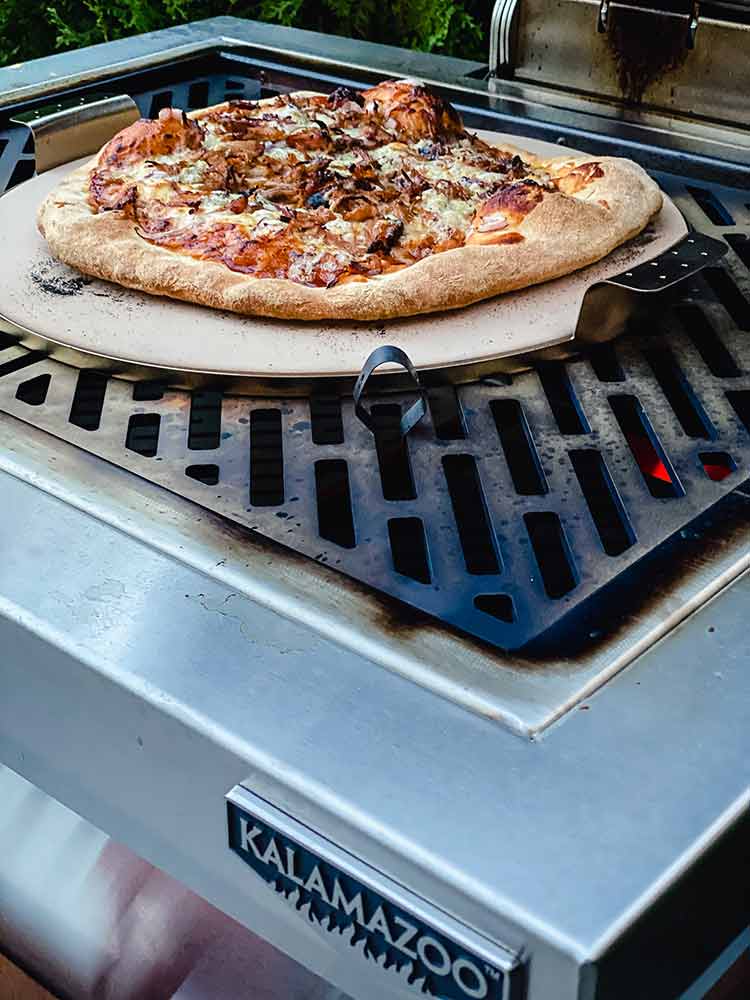
Baking pizza on the grill works well because these grills can reach such high temperatures, replicating the taste you get from a favorite wood-fired pizza restaurant.
Maybe you’ve already experimented with how to grill a pizza on the gas grill. Gas grills can make a good pizza, but making a Kamado Joe pizza or a pizza on the Big Green Egg or Kalamazoo Shokunin gives you an advantage over other grills.
Pizzas cooked on a normal grill are heated and cooked mostly from the bottom. A Kamado-grilled pizza takes advantage of the rounded, dome shape of the insulated lid.
Essentially, your pizza will be cooking from both the top and bottom.
Heat from hardwood lump charcoal is red hot and needs to be diffused for baking or grilling a pizza.
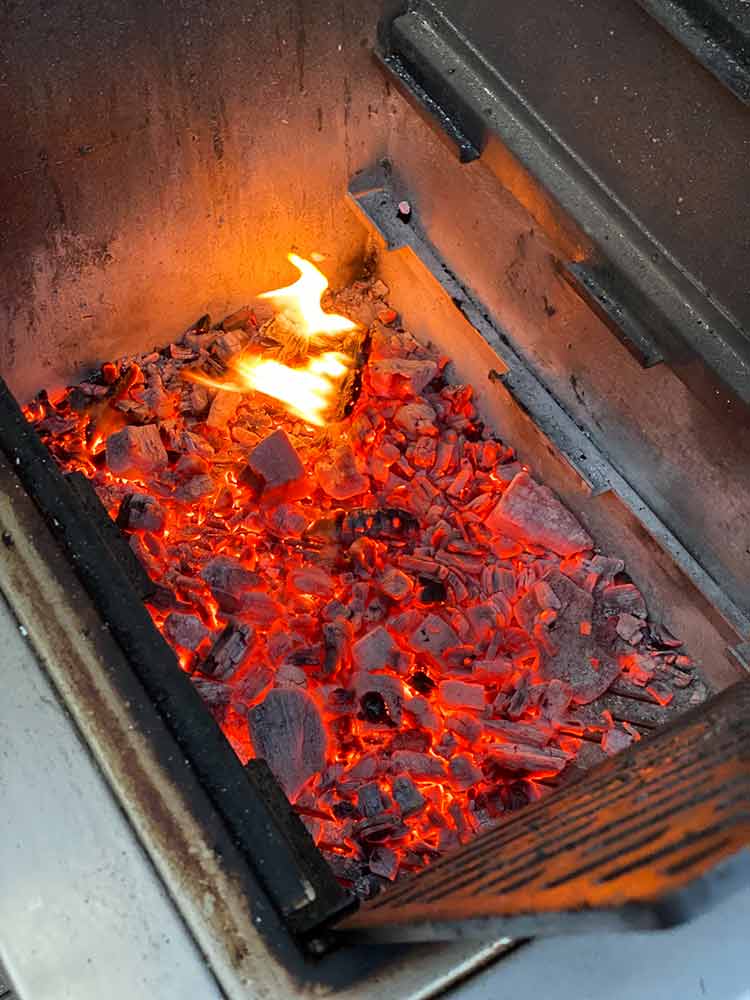
Kamado grills often come with a heat deflector designed to smooth out the heat and allow for more even temperatures when cooking indirectly. This is key not only for grilling pizza but for all baking on the grill.
Essentially, it’s hacking the cooker and making it function more like an oven than a grill.
Heat deflectors are designed so that you can still use the grill’s grate to cook food on. Most people will put a pizza stone or a pizza pan directly atop the grill’s grate.
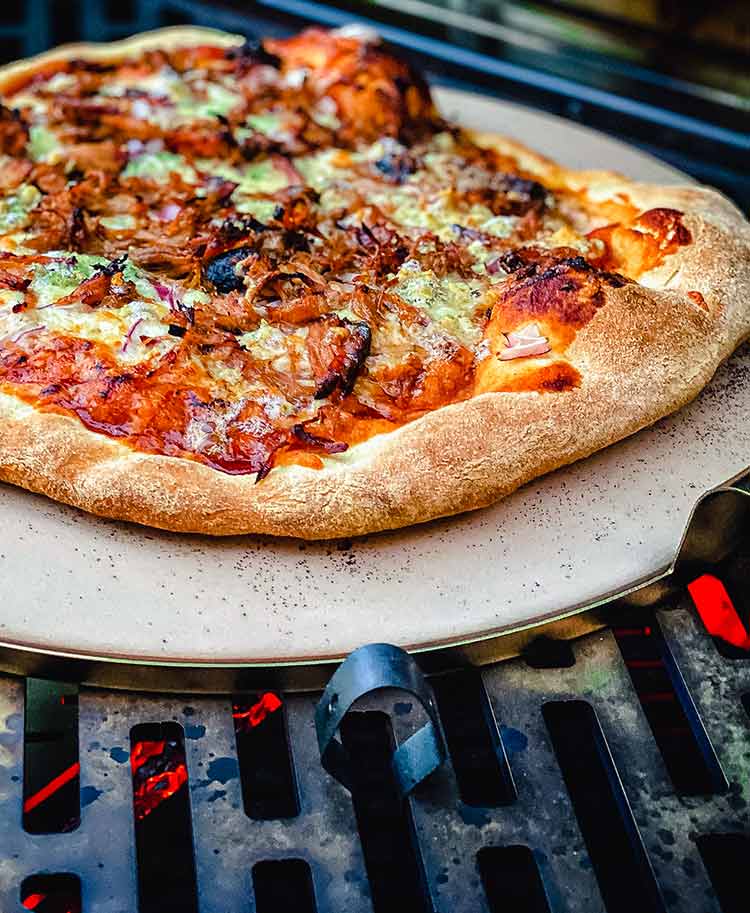
However, adding one more level of elevation is a real benefit to the pizza cooking setup. For this reason, it’s important to get the pizza stone or cooking surface as high in the dome as possible.
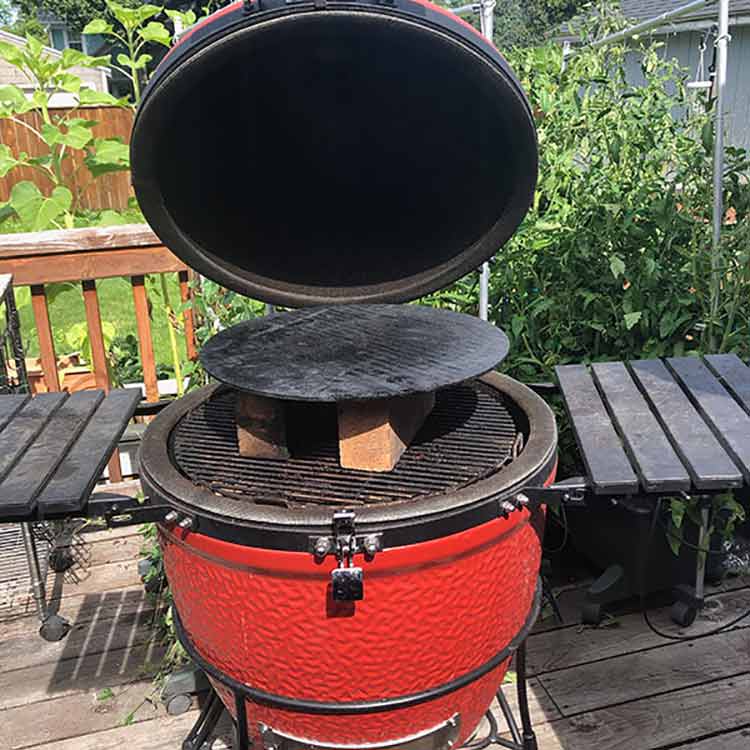
By putting three firebricks on the grill’s grate and the baking stone on top, you accomplish two things:
- The pizza is further elevated inside of the grill. This allows the heat from the top of the dome to reflect down, which will melt the cheese and help cook the toppings.
- The firebricks add more thermal mass to the grill. Once heat-soaked, the hot bricks allow the Kamado grill’s temperature to recover more quickly when you open the grill.
TIP: Be sure to use firebricks or something that can safely heat and cool without exploding or off-gassing dangerous fumes or toxins.
There aren’t any rules when it comes to grilling a great pizza. But there are some guidelines for making your pizzas more delicious.
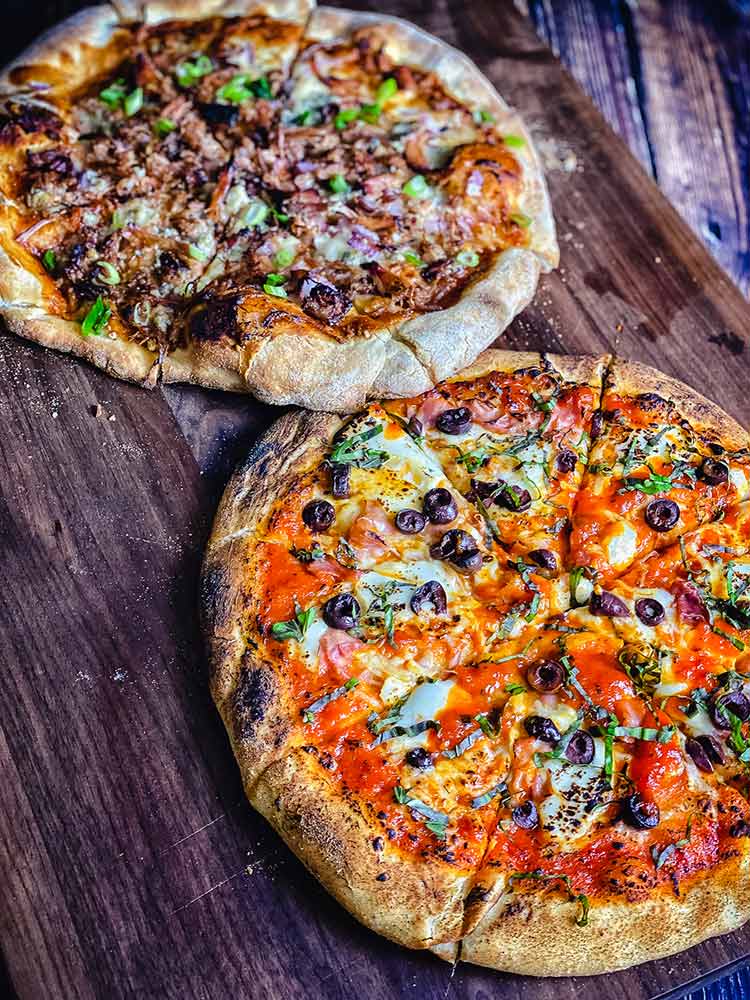
Ten Tips for Making a Kamado Pizza
Start with a Clean Kamado Grill: The secret to getting stable and high temperatures is good airflow. Clean out any ash from your cooker.
Make sure your baking stone and heat deflectors are clean and free of any food scraps from previous cooks. Leftover scraps can leave acrid smoke flavors on your food.
Use Fresh Charcoal: Hardwood lump charcoal is the preferred fuel source for Kamado grills. Fresh charcoal will burn cleaner and hotter than charcoal that has been exposed to moisture and humidity.
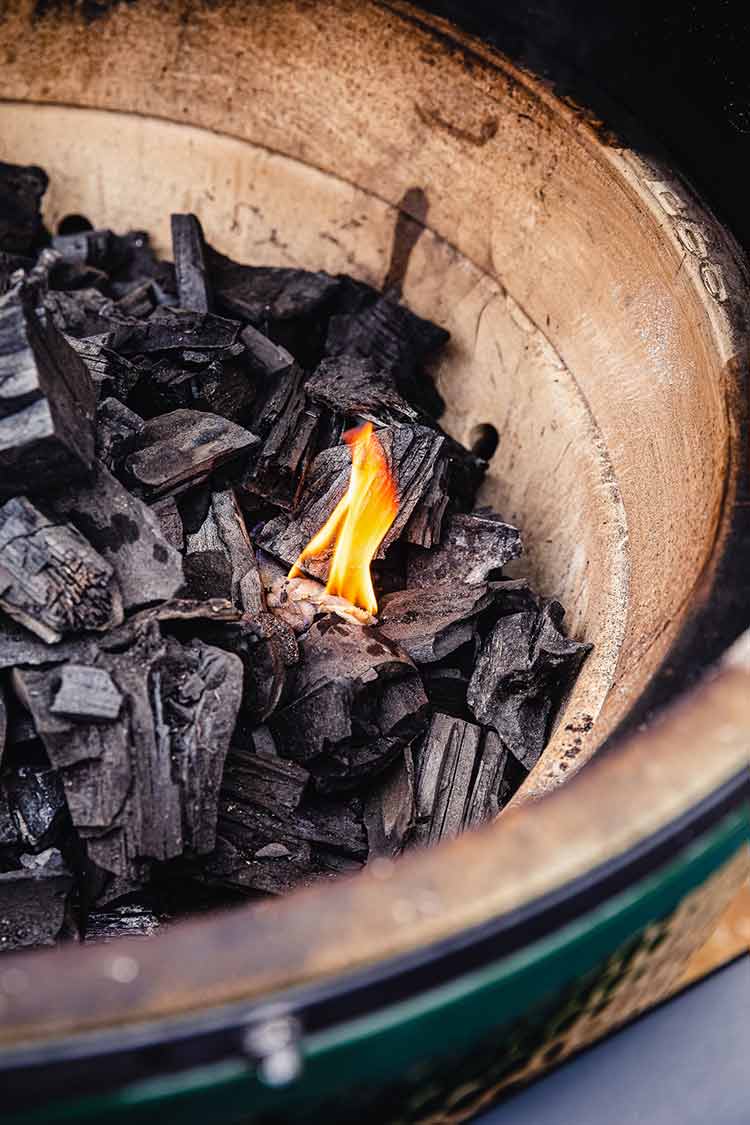
Preheat Your Kamado Grill: Allowing enough time for your grill, heat deflector, and pizza stone to come to temperature is very important. Kamado grills require time to come to temperature.
Once the grill stabilizes and becomes heat-soaked, it will stay at your desired temperature for quite some time. We recommend a full 90 minutes between lighting the charcoal and cooking your first pizza.
Close the Lid: And keep it closed! You’ve worked very hard to get the grill to your desired pizza-cooking temperature, so don’t leave the dome open for extended periods of time.
Know Your Dough: Purchasing store-bought dough or pizza dough from a local pizzeria is a great way to go. But ready-to-use dough is made for cooking at specific temperatures.
If your dough has directions about allowing it to warm-up to room temperature, or what temperature to cook at, follow them. If the dough’s directions say to cook at 400°F it will most likely burn at 700°F. This is because it probably contains sugars that burn before you even get a lightly browned or crispy crust.
There are also numerous pizza dough recipes online, and making it yourself can be fun!
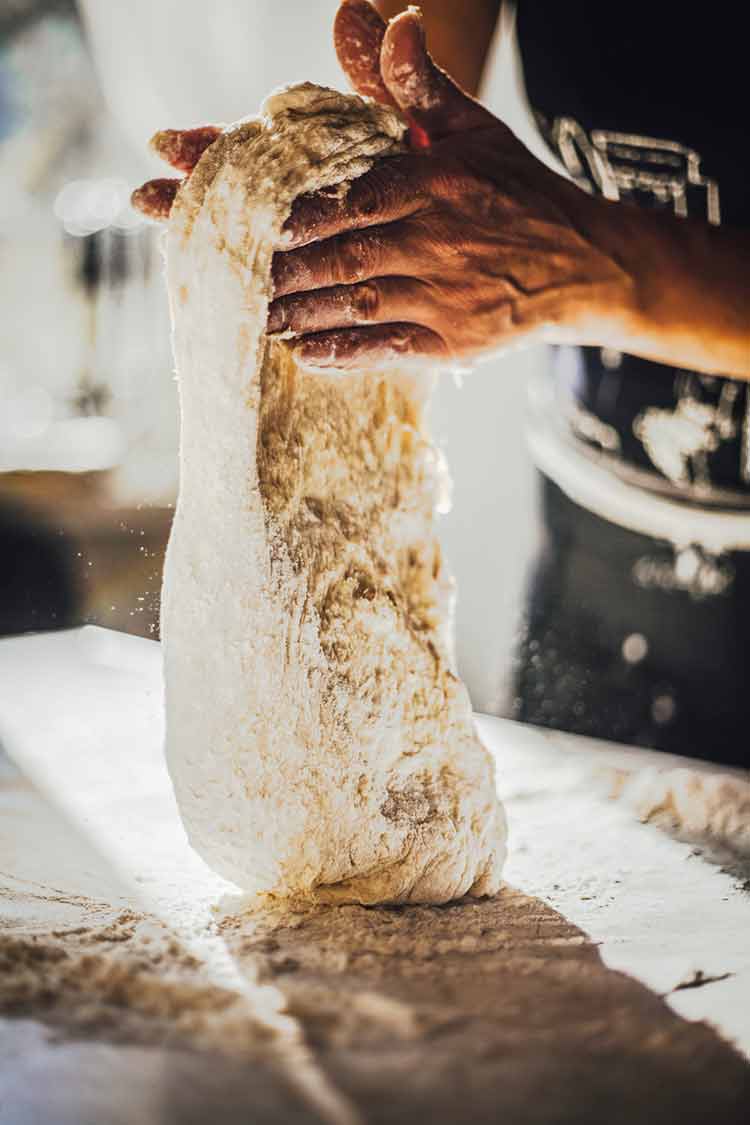
Thin to Win: Pizzas cook pretty quickly—most of them are done in less than 20 minutes. Making sure meats, vegetables, and other toppings are sliced thinly before cooking allows them to cook evenly on the grill.
Don’t Overload Your Pizza: Making homemade pizzas is so much fun because you have a blank canvas for flavors. When a pizza is overloaded with toppings, however, ingredients will steam rather than roast, leaving you with a soggy and wet crust. That’s not what you’re after.
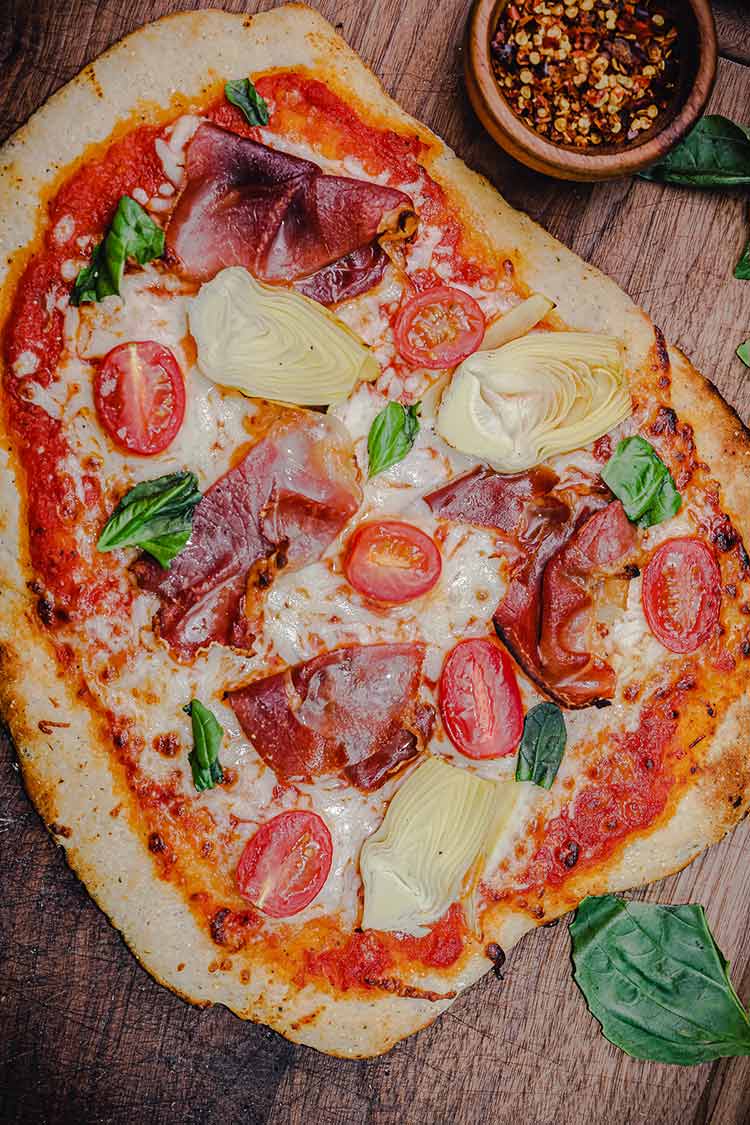
Make It a Family Affair: You can’t have a party without people. Encourage your guests to customize the Kamado pizza to their individual tastes. Some of the most random ingredients our guests have topped pizzas with have been the most delicious.
Embrace the Seasons: Seasonal toppings are wonderful because they are fresh and typically in abundance. Basil, peppers, and tomatoes often come to mind—but consider topping your pizzas with less popular items.
Fruits like cherries, mango, and peaches work well with spicy and salty meats. Squash blossoms, thinly sliced sweet potatoes, and spicier chili peppers like shishito or hatch chilies all make wonderful toppings. Even the often-abundant zucchini can be delicious on a Kamado pizza.
Have Fun and Experiment: Although favorites like sausage and pepperoni with mozzarella and a red sauce will always make a delicious pie, get creative. Salad dressings like ranch or Italian can make a delicious sauce.
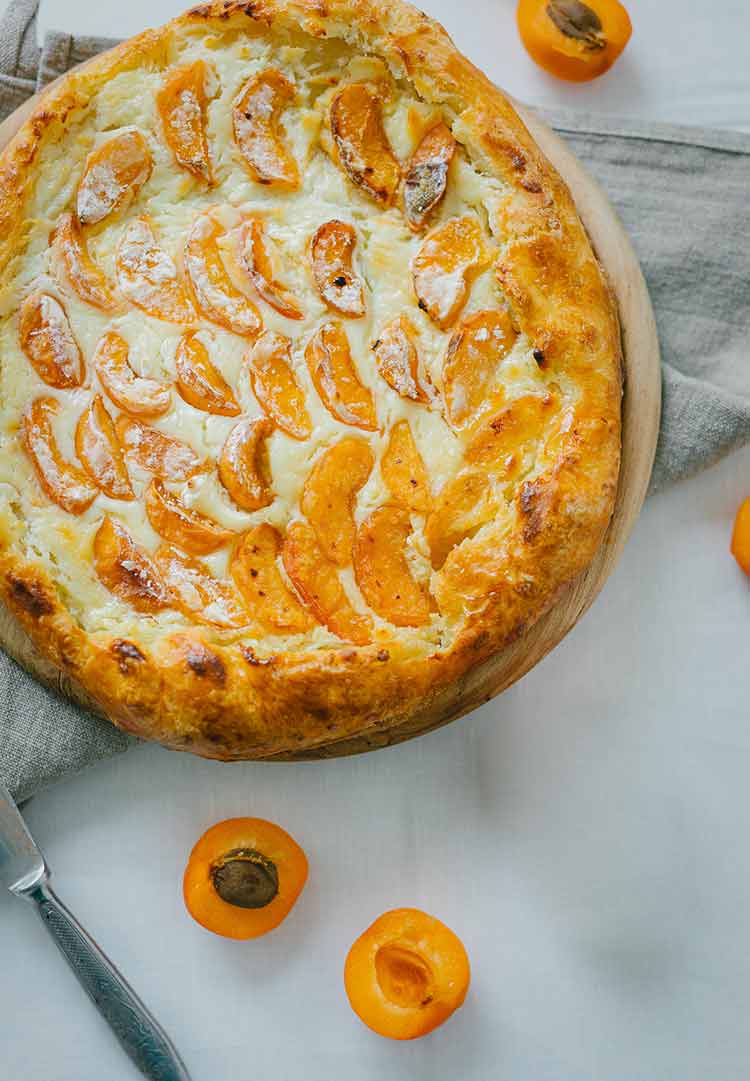
Pickled vegetables like artichoke hearts, pickled asparagus, and jalapeños, are all wonderful on a pie. We’ve even made dessert pizzas on the Kamado grill. Consider a s’mores pizza or using chocolate chip cookie dough as a crust with a slather of fresh wild huckleberries and mascarpone cheese.
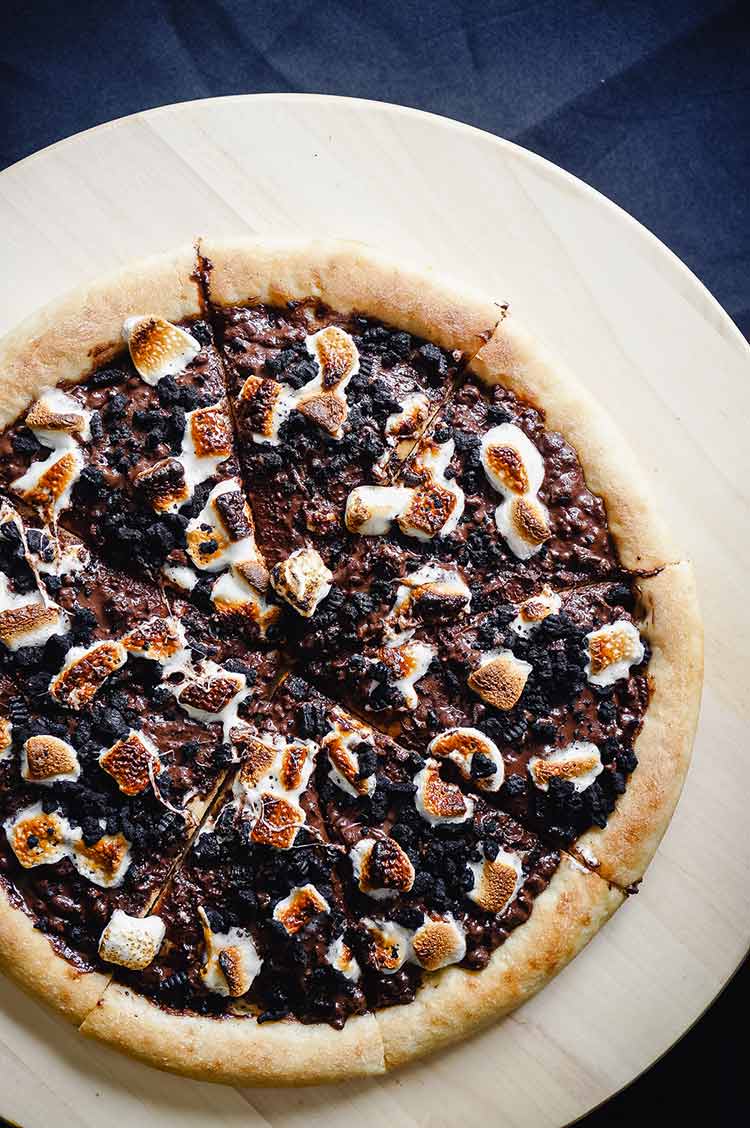
One other benefit to cooking pizza on the Kamado grill is that it’s done outside. So if you get a taste for pizza on a hot summer day there’s no need to fire up the oven and heat up the house.
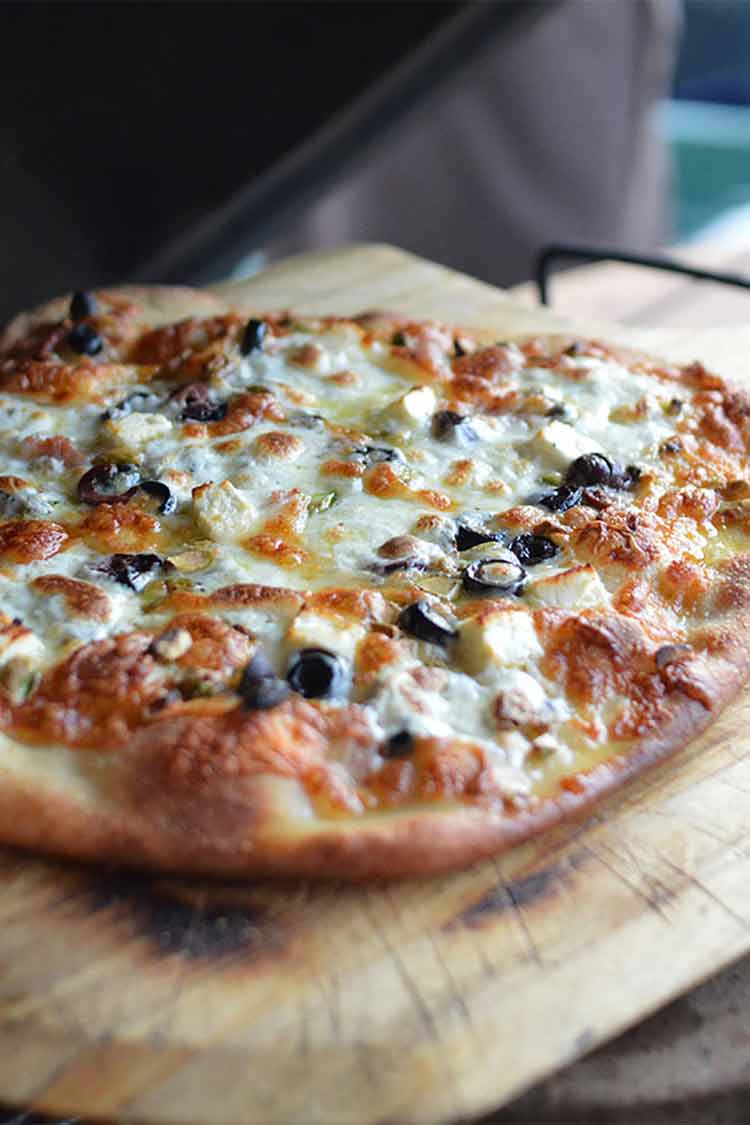


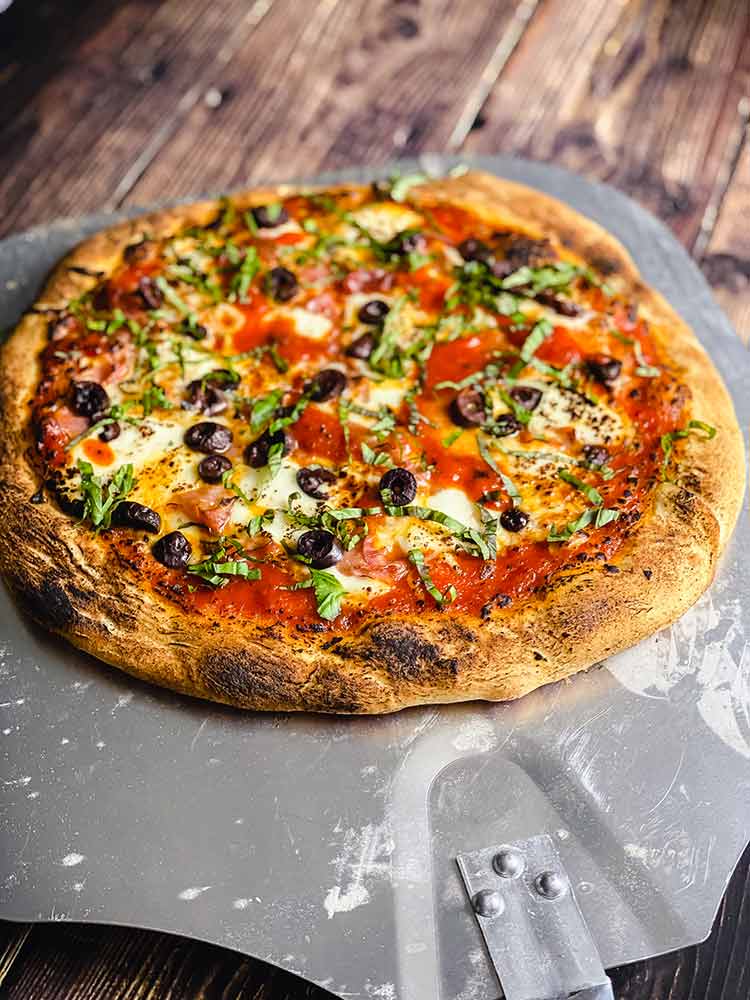
I’m not sure how much charcoal to put in the Kabila and then how much to have the vents opened. We have had a lot of success but some overcooked and dry also. I have always loved the charcoal because I don’t really find cooking over gas or propane appealing. This Kabila has been one of my better buys. Especially because I bought it later in the season so was only 400.00. Just bought a pizza stone and can’t wait to try.
Hey Laura, Thanks for checking out the article. When you say “kabila” are you referring to a kamado? Happy to help you out if you can clear that up? Might be a typo?
-M
Great article! Got my first kamado grill and your article helps me as a kamado beginner.
Glad to hear it Jarvis, enjoy the new Kamado cooker.
-M
I am having a difficult time getting my pizza stone up to temp and maintaining temp. I have even pre heated it in my oven and gas grill. I am using the deflector plates, then fire bricks to raise the stone up into the dome. I cook at 550*, the top of my pizzas cook, the crust browns, but the bottom of the pizzas are not cooking and my dough is still white and almost raw. In your photo with the stone raised up into the dome on the Kamado Joe, are the deflector plates being used below the grates? I’m thinking with the stone that high, maybe I don’t need to use the deflector plates? What do you think?
Hey Jeremy – sorry to hear you’re having a rough time with the dough. to answer your question, the deflector plates are installed in the KJ for the pizza. to be honest, I’ve never tried it would the deflector plates but I suspect your issue is more about the dough that the heat. If your dough is on the higher hydration time, it will sometimes not cook on the bottom before the top is done. I’d experiment with that first. And keep in mind, not all pizza dough should be baked at 500+ degrees. Finally, the book Mastering Pizza is SUPER helpful, I highly recommend it!
-M